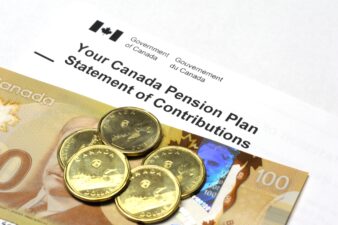Many Canadians wish to be a landlord. At the rate at which house prices are surging in Canada, someone who bought a house in Toronto in 2010 is set to retire wealthy just from the rent they earn from the property. A lot has happened since the 2009 Financial Crisis. Many developers and retailers spun off their real estate into a real estate investment trust (REIT) to enjoy the corporate tax exemption of a trust. They raised capital by listing the REITs on the Toronto Stock Exchange and started paying high distributions.
REIT: A hedge against inflation
REITs opened up the world of real estate to an average investor, giving them exposure to rental income. Rent depends on factors like property type, location, size, facilities, and neighbourhood. If the property is a commercial or retail property, it generates even higher rent. Commercial REITs also offer state-of-the-art facilities and offices of big companies in the neighbourhood.
Real estate is an asset class that benefits from higher inflation. Higher inflation increases rent, and higher rent increases income for REITs. But too much of anything is bad. If inflation goes out of control, the central bank increases interest rates, making borrowing expensive. This makes real estate unaffordable and pulls down prices. This is what is happening right now.
When prices of everything are rising, prices of REIT stocks are falling. In this inflationary environment buying REIT stocks at a cheap rate can help you lock in a higher distribution yield. When the economy recovers, and real estate prices begin to rise, REIT stock prices will rise, and you can benefit from capital appreciation.
Be a landlord for $8,000 and earn $760 annual rent
True North Commercial REIT (TSX:TNT.UN) is trading at an attractive discount of over 15% from its average trading price. The REIT has a mixed tenant base across verticals, government (34%), services (26%), finance, insurance, real estate (17%), manufacturing (12%), and others. Its major anchor is government tenants that help it attract other high credit rating companies and make existing tenants sticky.
True North’s occupancy rate in 46 properties reduced to 95.4% in the second quarter from 97.1% in the previous year’s quarter. The rising inflation helped it increase second-quarter rent renewal by 5.5% and net operating income from the same properties by 7.2% year over year.
The REIT has a strong tenant base and a weighted average lease term of 4.3 years. This is a good time to buy the stock, as its distribution is safe for the next four years.
If you go to lease a 1,000 sq. ft. office space in Greater Toronto Area, the cheapest rent is $8,000. If you invest one-month rent in True North Commercial REIT, it can give you $63 a month in distribution income. That brings your annual distribution to $760. Moreover, your $8,000 can become $9,200 when the economy recovers.
Could True North Commercial REIT grow its monthly rent?
As I said before, REITs are a relatively new concept, and it takes an infrastructure company a robust portfolio (which is significantly paid off) to grow dividends. True North Commercial has been paying distributions since 2013 and has maintained a stable amount of $0.495 per month. It is looking to grow by increasing its tenant base and expanding its property portfolio.
It will take years for the REIT to move past stable distributions and grow its distributions. The REIT currently distributes 96% of its distributable cash flow (DCF). Even if it aims to maintain a 95% payout ratio, it needs to lease more properties to increase its DCF. For example, Enbridge grows dividends in tandem with its DCF.
It will take True North Commercial five to 10 years to have a portfolio large enough to grow its DCF. But when it achieves that size, the distribution yield will fall. This is a trade-off you have to make in stock investing. Small-cap stocks offer high returns but contain high risks. If you want lower risk, you have to compromise on returns.








